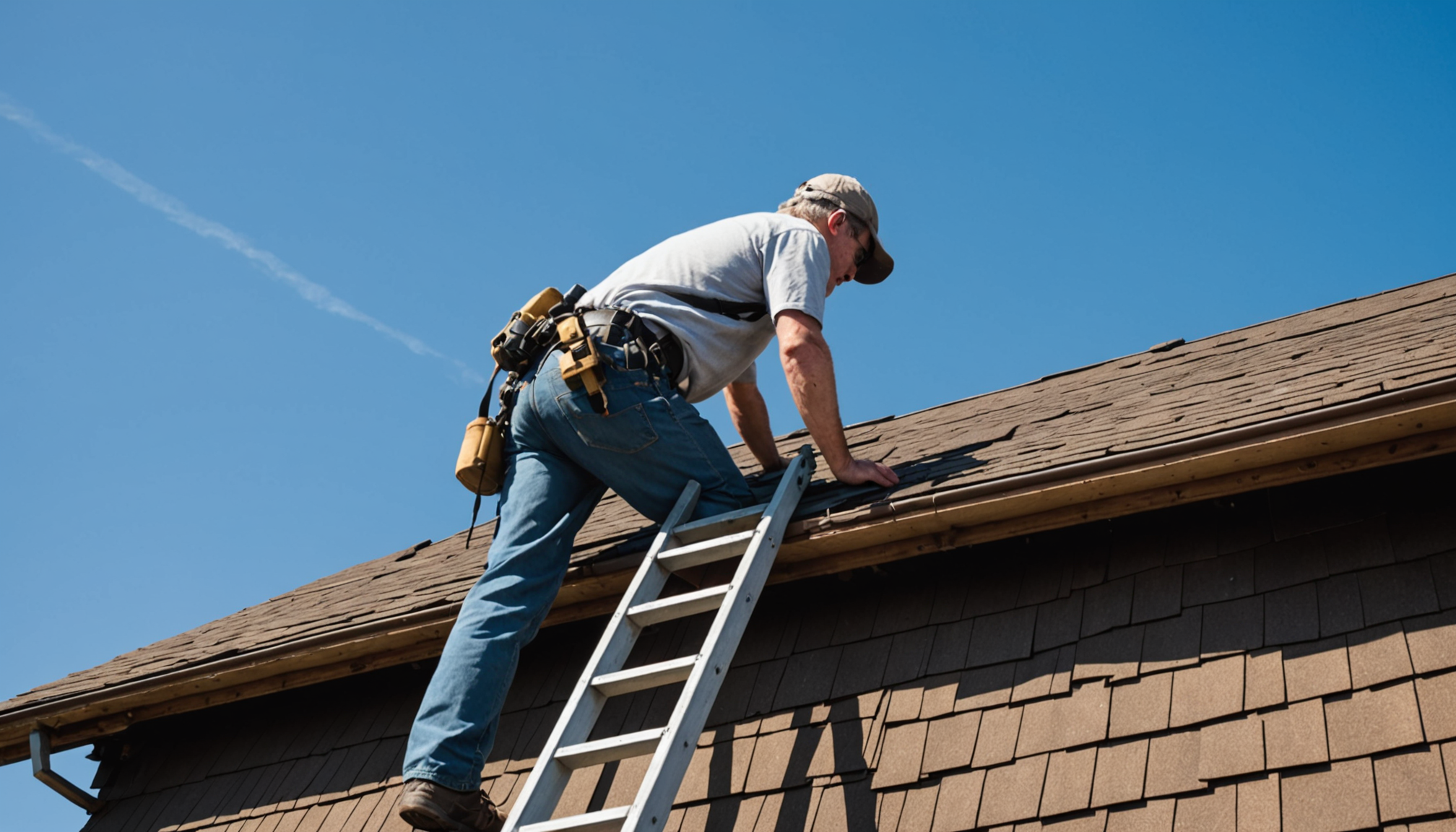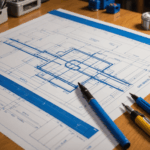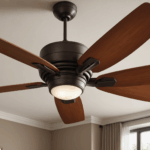Before diving into any renovation projects on your roof, it is crucial to begin with a thorough inspection for damage. This initial step sets the foundation for successful upgrades and can save you from potential headaches down the road. A well-maintained roof not only protects your family and home but also enhances the value of your real estate investment.
Start by examining the interior of your home for signs of water damage, such as stains on ceilings or walls. These could indicate a roof leak that needs immediate attention. In your attic space, look for any light rays filtering through the roof boards, which can be a sign of larger gaps or holes.
Moving outside, you’ll want to carefully inspect the roof’s surface. Look for missing, cracked, or curled shingles, which are common after storms or due to age. Pay special attention to areas around chimneys, skylights, and vent pipes where seals can break down, creating vulnerabilities.
Don’t overlook the gutters and downspouts during your inspection. Clogged or damaged gutters can prevent proper drainage, leading to water pooling and potentially damaging the roof and eaves. Ensure gutters are securely attached and free from debris such as leaves or dirt.
Consider hiring a professional roofing inspector if you’re uncertain about the process or unable to access certain areas safely. An expert can provide a detailed assessment and recommend necessary repairs. This proactive approach can prevent minor issues from escalating into more severe problems. Additionally, a professional inspection report can be invaluable if you decide to sell your home, as it assures potential buyers of the roof’s condition.
Here’s a quick comparison of DIY versus professional roof inspection approaches:
| Aspect | DIY Inspection | Professional Inspection |
| Cost | Minimal, mainly time investment | Higher, but comprehensive |
| Safety | Risk of falls, especially on steep roofs | Trained personnel with safety equipment |
| Expertise | Basic checks, may miss subtle issues | In-depth knowledge of potential issues |
| Equipment | Few tools needed, such as a ladder | Advanced tools for comprehensive assessment |
| Duration | Quicker, but potentially less thorough | Longer, detailed analysis |
Addressing roof damage promptly not only protects your current living space but also secures the longevity of future renovation endeavors. This careful upkeep is an integral part of maintaining a structurally sound and visually appealing home, complementing other aspects of your property, such as landscaping, to create a cohesive and serene environment for you and your family.
choosing new materials
When planning to renovate your roof, selecting the right materials is crucial not only for the aesthetic appeal but also for durability and performance. Here’s a step-by-step guide to help you make an informed choice:
1. Assess Current Needs and Future Plans:
– Begin by evaluating the current condition of your roof and your plans for staying in the house long-term. If you’re planning to sell in the next few years, consider how your choice will impact the real estate value.
– Consider your family’s needs and preferences, such as noise reduction or eco-friendliness, which might influence your material selection.
2. Evaluate Different Roofing Materials:
– Asphalt Shingles: The most popular choice for many homeowners due to their affordability and easy installation. They come in a variety of colors and styles to match your home’s exterior.
– Metal Roofing: Known for its durability and energy efficiency. It can last up to 50 years and offers great protection against extreme weather conditions.
– Clay Tiles: Offer a classic, Mediterranean look and are highly durable. They’re great for warm climates but can be heavy, so ensure your roof structure can support them.
– Slate: Provides an elegant appearance with high durability, often lasting over a century. Though more expensive, it’s ideal for those looking to invest in a long-term solution.
– Wood Shingles or Shakes: Offer a natural and rustic appeal, perfect for blending with landscaping. They require more maintenance and are not recommended for areas prone to wildfire.
3. Consider Climate and Environmental Factors:
– Research how different materials perform under the weather conditions specific to your area. For example, metal is excellent for areas with heavy snowfall, while clay tiles are ideal for hot, dry climates.
– Take into account the local regulations or homeowners association guidelines, which might restrict certain materials in favor of aesthetic cohesion or safety standards.
4. Set a Budget:
– Clearly define your budget, considering not only the cost of materials but also the installation expenses. Keep in mind that while some materials may have a higher upfront cost, they could offer better longevity and lower maintenance costs in the long run.
– Factor in any potential benefits, such as energy savings from materials like metal or slate, which can reduce heating and cooling bills.
5. Seek Professional Advice:
– Consult with roofing professionals who can provide insights based on experience and knowledge of roofing systems. They can guide you through options that align with your budget, aesthetic preferences, and functional needs.
– Obtain several quotes and compare not just prices but also their expertise, warranty offers, and portfolio work.
Choosing the right materials is a critical step in the roof renovation process. By considering function, aesthetics, and local conditions, you can ensure that your roof not only enhances your home’s value and curb appeal but also provides lasting protection for your family.
enhancing insulation
When it comes to updating your home’s roof, one of the most effective strategies for increasing both comfort and efficiency is to focus on insulation. This often-overlooked aspect of roofing plays a crucial role in regulating your home’s temperature, reducing energy consumption, and ultimately saving you money. By enhancing roof insulation, you are investing in your family’s comfort and the long-term value of your real estate asset.
A key benefit of improving your roof’s insulation is its energy efficiency. A well-insulated roof helps to maintain a stable indoor temperature by minimizing heat transfer. In hot climates, enhanced insulation reduces the amount of heat that enters your home, thereby decreasing the need for air conditioning. Conversely, in colder climates, it prevents warm air from escaping, reducing the reliance on heating systems. This dual capability ensures that your HVAC system operates more efficiently, potentially lowering your energy bills significantly.
Another important advantage is the comfort level that improved insulation provides. By maintaining consistent indoor temperatures, you can eliminate drafts and cold spots that lead to uncomfortable living conditions. This uniformity in temperature distribution enhances living spaces, making them more cozy and inviting throughout the year, which is particularly beneficial for families seeking to create a welcoming home environment.
Environmental impact is yet another critical consideration. By reducing the need for excessive heating and cooling, your home’s carbon footprint is minimized. This aligns with growing environmental concerns, allowing you to contribute positively to the environment. For eco-conscious homeowners looking to renovate their roofs, improved insulation is a step towards sustainability.
In addition to comfort and energy savings, enhanced insulation offers noise reduction benefits. It acts as a buffer against outside noise, providing a quieter indoor atmosphere. This can be especially valuable if your home is located in a busy urban area or near major roadways. By minimizing exterior sounds, you create a more serene environment for your family to relax and unwind.
Insulation also contributes positively to the health of your roof by protecting it from moisture-related issues. Properly installed insulation helps to prevent condensation within the attic space, which can lead to mold and mildew growth, structural damage, and poor indoor air quality. By safeguarding the structural integrity of your roof, you ensure that this significant aspect of your home is well-maintained, thus reinforcing the value of your investment in both the short and long term.
Enhancing your roof’s insulation is a strategic move that not only optimizes your home’s energy use but also elevates comfort, enhances property value, and aligns with sustainable living. This thoughtful renovation approach integrates function with a commitment to eco-friendly practices, benefiting your family and the environment alike.
adding solar panels
Integrating solar panels into your roof renovation project offers a compelling array of benefits that go beyond simple updates, transforming your home into a more energy-efficient, eco-friendly haven. As energy costs rise and environmental concerns take center stage, adding solar panels becomes not only an economically savvy choice but also a sustainable one that aligns with modern living standards.
One of the most significant advantages of installing solar panels is the potential for substantial energy savings. Solar panels harness sunlight and convert it into electricity, which can significantly reduce or even eliminate your dependence on traditional power grids. This results not only in lowered monthly utility bills but also positions your family to be less vulnerable to fluctuations in energy prices. In the long term, the energy cost savings can offset the initial investment in solar technology, eventually offering free or reduced energy for the lifetime of the panels.
Incorporating solar panels can profoundly enhance the value of your real estate. Homes equipped with solar panel systems are increasingly attractive in the market due to their energy-efficient features. Potential buyers are often willing to pay a premium for properties that promise lower utility costs and reduced environmental impact, thus integrating solar panels can be a wise investment that boosts your home’s resale value.
From an environmental perspective, adopting solar technology contributes positively by reducing your home’s carbon footprint. Traditional energy production relies heavily on fossil fuels, which contribute to pollution and global warming. By utilizing renewable energy from the sun, you actively participate in the global movement towards sustainable living, representing a forward-thinking approach that benefits the earth and future generations.
Beyond economic and environmental impacts, solar panels can also enhance your home’s independence and reliability. During natural disasters or grid failures, homes with solar power can remain functional, providing electricity when conventional systems fail. This resilience can be particularly crucial in regions prone to extreme weather conditions or frequent power outages, offering peace of mind for your family’s continuous comfort and safety.
As you enhance your roof’s capabilities with solar panels, it’s imperative to explore federal and state incentives. Many governments offer substantial tax credits, rebates, and incentives to homeowners investing in solar energy, effectively reducing the net cost of installation. By taking advantage of these financial programs, you can make solar power more affordable while accelerating the return on investment.
Integrating solar panels into your roof renovation project isn’t just about energy efficiency; it’s a holistic decision that can lead to comprehensive practical benefits for your family and significantly contribute to the sustainability of your property. By embracing this clean energy source, you enhance not only your home’s functionality but also its contribution to preserving and nurturing our environment.
improving ventilation
Adequate ventilation may not be the first thing that comes to mind when considering a roof renovation, but it plays a vital role in maintaining the overall health and efficiency of your home. Proper ventilation facilitates airflow in the attic, preventing issues such as moisture buildup, which can lead to mold growth and structural damage. This proactive measure ensures that the roof serves its duty well, enhancing the longevity of your real estate investment.
By improving your home’s ventilation, you can significantly impact the energy efficiency of your property. When attics are well-ventilated, they help regulate the temperature by allowing excess heat to escape during the summer months and retaining warmth in winter, thus reducing the burden on heating and cooling systems. The balance achieved through ventilation reduces energy expenses, leading to a more comfortable living environment for your family.
Furthermore, effective roof ventilation is crucial in prolonging the life of roofing materials. Excess heat and moisture trapped in your attic can cause roofing materials to degrade prematurely. In summer, a poorly ventilated attic can reach high temperatures that shorten the lifespan of shingles, while moisture accumulation in winter can cause wood components to weaken over time. By ensuring proper airflow, you help maintain the integrity of materials, potentially saving money on future repairs or early replacements.
An added benefit of enhanced ventilation is its contribution to enhanced indoor air quality. By facilitating the exchange of stale air with fresh air, ventilation systems reduce indoor pollutants and odors, contributing to a healthier living space. This improvement can be particularly beneficial for family members with allergies or respiratory sensitivities, as it helps minimize the risk of mold and pollutant buildup inside the home.
For a comprehensive approach to improving ventilation, consider integrating both passive and active ventilation systems. Passive ventilation, such as ridge vents, soffit vents, and gable vents, utilizes natural wind patterns and thermal buoyancy to promote air circulation. On the other hand, active systems, like attic fans and turbine vents, can be utilized to enhance airflow in more stagnant conditions, ensuring consistent and effective ventilation throughout the year.
Before implementing any ventilation solution, it’s wise to consult with roofing professionals to assess current ventilation needs and customize solutions to your specific home and climate. With their expertise, you can determine the optimal mix of systems that offer both functional and aesthetic benefits, harmonizing with your overall home design and landscaping considerations.
In conclusion, renovating your roof with smart strategies can elevate the efficiency, comfort, and aesthetic appeal of your home. By conducting thorough assessments, choosing appropriate materials, enhancing insulation, adding solar panels, and improving ventilation, you invest in long-term benefits that align with sustainable living. Each step not only boosts your family’s comfort but also enhances the value and integrity of your real estate investment, ensuring a secure and inviting sanctuary for years to come.


